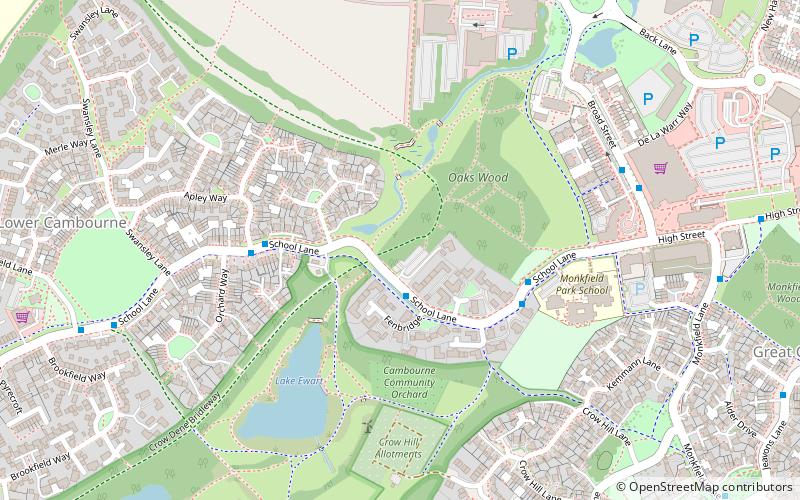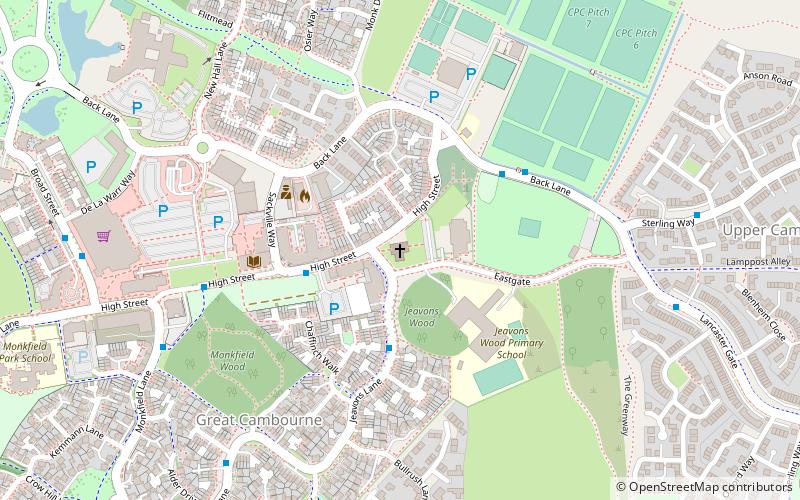Cambourne Nature Reserve, Cambourne
#1 among attractions in Cambourne


Facts and practical information
Cambourne Nature Reserve is a 90 hectare nature reserve in Cambourne in Cambridgeshire. It is managed by the Wildlife Trust for Bedfordshire, Cambridgeshire and Northamptonshire. ()
Cambourne United Kingdom
Cambourne Nature Reserve – popular in the area (distance from the attraction)
Nearby attractions include: Cambridge American Cemetery and Memorial, Wimpole Estate, Mullard Radio Astronomy Observatory, Wimpole Home Farm.
 Cemetery
CemeteryCambridge American Cemetery and Memorial, Cambridge
141 min walk • The Cambridge American Cemetery and Memorial stands as a solemn tribute to the American servicemen and women who lost their lives during World War II. Situated in the serene English countryside near the city of Cambridge, this cemetery occupies 30.5 acres and is the...
 Park, Vernacular architecture, Historical place
Park, Vernacular architecture, Historical placeWimpole Estate, Cambridge
139 min walk • Nestled in the heart of the Cambridgeshire countryside, Wimpole Estate is a remarkable testament to England's rich historical tapestry. This grand estate, managed by the National Trust, encompasses a majestic mansion, a working farm, and a sprawling parkland, offering...
 Observatories and planetariums
Observatories and planetariumsMullard Radio Astronomy Observatory
152 min walk • The Mullard Radio Astronomy Observatory is located near Cambridge, UK and is home to a number of the largest and most advanced aperture synthesis radio telescopes in the world, including the One-Mile Telescope, 5-km Ryle Telescope, and the Arcminute Microkelvin Imager.
 Museum, Farm
Museum, FarmWimpole Home Farm
135 min walk • Wimpole Home Farm is an 18th-century model farm on the Wimpole Estate, Arrington, Royston, in South Cambridgeshire, England, and operated by the National Trust. It is one of 16 Rare Breeds Survival Trust approved farm parks.
 Forts and castles
Forts and castlesWimpole's Folly
122 min walk • Wimpole's Folly is a folly ruin located on the grounds of Wimpole Hall, in the parish of Wimpole, in Cambridgeshire, England. The folly is designed to resemble the ruins of a medieval castle, but is not a ruin itself.
 Church
ChurchCambourne Church
13 min walk • Cambourne Church is a "local ecumenical partnership" between the Church of England, Baptist Union of Great Britain, Methodist Church of Great Britain and the United Reformed Church. It is located in the heart of Cambourne, Cambridgeshire and provides Christian community in the area.
 Church
ChurchSt Margaret's Church
147 min walk • St Margaret's Church is a historic Anglican church in the village of Abbotsley, Cambridgeshire, England. It is recorded in the National Heritage List for England as a designated Grade II* listed building, and is under the care of The Churches Conservation Trust.
 Park
ParkSt Denis
151 min walk • St Denis' Church, East Hatley is a de-consecrated church in East Hatley in Cambridgeshire, England. It is a listed building, Grade 2*, and the building and its churchyard are a 200 square metre Local Nature Reserve. It is owned and managed by the Friends of Friendless Churches.
 Church
ChurchSt John the Baptist's Church
108 min walk • St John the Baptist's Church is a redundant Anglican church in the village of Papworth St Agnes, Cambridgeshire, England. It is recorded in the National Heritage List for England as a designated Grade II* listed building, and is under the care of the Friends of Friendless Churches.
 Church
ChurchSt Michael
170 min walk • St Michael's Church is a redundant Anglican church in the village of Longstanton, Cambridgeshire, England. It is recorded in the National Heritage List for England as a designated Grade II* listed building, and is under the care of the Churches Conservation Trust.
 Park
ParkOrwell Clunch Pit
160 min walk • Orwell Clunch Pit is a 1.8 hectare biological Site of Special Scientific Interest on the northern outskirts of Orwell in Cambridgeshire. It is owned by Orwell Parish Council and managed by the Clunch Pit Management Trust. This former stone quarry has a rich chalk grassland flora, a habitat which has become scarce in eastern England.
